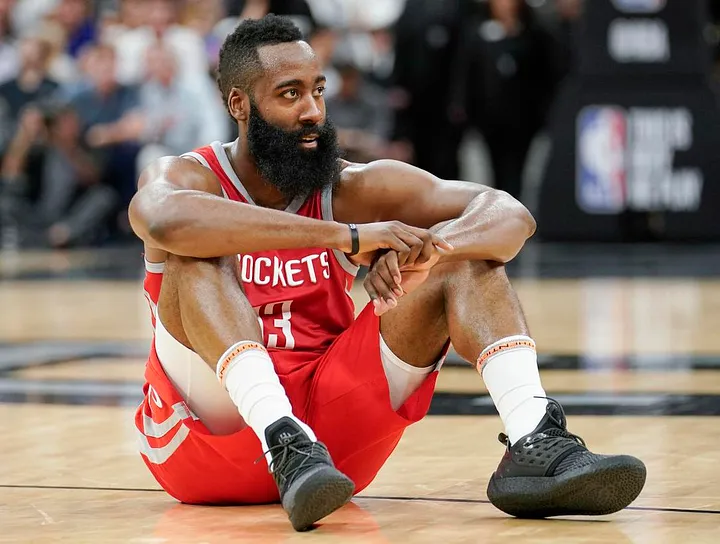
13 Mar Isolation Is Not Iso-Ball
Last week I watched Adam Silver’s interview at the MIT/Sloan Sports Conference, an interview conducted by podcaster, founder and CEO of The Ringer, Bill Simmons. As a female sports enthusiast, listening to Simmons can often times be likened to listening to someone with chronic halitosis. I really want to hear what he has to say, but the odor of his persistent relegation and habitual omission of female athletes and fans can be an alienating stench to tolerate. Nonetheless, I used my interest in the NBA’s current challenges, to cover my sociologic nose and hit play.
Commissioner Silver has always struck me as a person of great composure, someone whose hand is always firmly on the throttle that regulates his emotion and reason. That’s why I found it a bit surprising, though appreciated, that he spoke with discernable emotion when talking about young players and the problem of isolationism, a societal problem affecting youth in general. Through several conversations Silver has had with players, the issue has become one that registers on his radar screen of concern. With a recent focus on player mental health, and the current buzz topic about player happiness, that concern bears directly on the image and entertainment product that is the NBA.
This was the first time I heard the term isolation is mused in sports. Silver used it to describe the psychological and emotional deprivation players can experience, upon joining the league. Feelings of disconnectedness, loneliness and even depression are not uncommon when making the adjustment. I wanted to hear more about this issue. That led me to another Simmons podcast, featuring sports journalist Ryen Russillo.
Well into the discussion, at about the 82-minute mark, Simmons and Russillo brought up the point that players have each other’s phone numbers, but that they usually don’t spend much time together off the court. Simmons made the comparison that players from 20 years ago “had no choice but to hang out”, while players today have technology that isolates them.
The discussion then moves to a guessing game, as Russillo and Simmons select players to evaluate for how, despite their financial and professional success, they can still feel isolated. They begin with Giannis Antetokounmpo and quickly dismiss him as a bad example because Giannis “seems happy all the time”. Next, Klay Thompson, who they also dismiss as a bad example because he “just rolls with everything”.
Finally, Simmons and Russillo settle on Andre Drummond. They describe him as a 25–26 years old making $30 million per year, and a “top 5 rebounder; never really had playoff success; people pick him apart online… one of best 50 guys in the league”.
Russillo moved the discussion of how this is an example that people don’t focus on what is great about our professional situation, but rather about the things that frustrate us. Simmons runs with this topic. He mentions that Kevin McHale always understood how lucky he was to play with Larry Bird but that if they played together in 2019, McHale would be conditioned to think he needed to be the star of his own team. The discussion moved completely past the topic of isolationism, without a trace of deeper evaluation for understanding.
However, Simmons and Russillo stumbled upon a tremendous gem of insight, before burying it beneath the footsteps of their gloss-over exchange. By pointing out that Giannis and Klay were bad examples of isolated players, they unknowingly pointed to a possible reason why. A greater understanding of this reason could provide a solution, to a player-plaguing isolationism that may be league wide.
Financial abundance and professional success do not form a firewall against isolation. The privation it creates can be a mental, emotional and psychological state so consuming that it undermines everything people often associate with “happiness”. If the tragic and surprising suicides of people like Kate Spade and Anthony Bourdain don’t demonstrate this, nothing will. Furthermore, isolation doesn’t discriminate. It will strike the prettiest girl in class, as quickly as it will the gay student outcast. And it can cripple the most powerful linebacker on the field, as capably as it impairs a frail widow.
Cash, cars and championship rings can’t sit and have a conversation with you; or wish you happy birthday; or tell you a joke; or introduce you to the person you fall in love with. Friends, and more significantly, family can. This is what Russillo and Simmons stumbled upon, what Klay and Giannis have in common. Both live near their families of origin. Both have talked publicly about this. And both attribute much of their feelings of support to this.
The March 8, 2016 podcast on The Woj features a discussion between Adrian Wojnarowski and Klay Thompson. At minute 33 during the podcast, Woj says “The way your family pulls for each other in your careers…not every guy has that kind of family support; there’s a lot of guys who go through this very alone. Once you get to this level you realize how rare it is what you have…and what you have as a family, to have that kind of support system.” Thompson responds, “Yeah, oh definitely. It’s something I don’t take for granted…Being drafted in the Bay worked out so great because I’m far enough from all my friends and family but close enough that they can come see me anytime they want…I always love having my parents up here…and my little brother when it’s on his off season….I spend my off season with my big brother working out…These are the people I grew up with and I can trust them the most…I know they have my best interest…”.
In the TNT documentary Finding Giannis, sports agent Giorgos Panou explains that when Giannis came to America “he was vulnerable, scared…He didn’t want to go home. He was alone.” Once he was able to move his family to Milwaukee, Giannis bought a home, so they could all live together. In a NBPA interview from April 2016, Giannis talks about how he spends weekends going with his family to Chicago.
Nearly every player entering the NBA is moving out of their family home, away from the city and neighborhood they grew up in. They move onto a street they’ve never seen before, in an area mapped out by avenues, drives and boulevards they don’t know. They are also leaving the friends and family that comprised the social universe of their interactive world. Even those players who enter the league from colleges and universities are leaving campuses and dormitories that gave them a reliable geographic familiarity, and provided them with friends and teammates who were face-to-face accessible. They move into cities where tens of thousands of people can identify them with pointed-finger recognition and the expectation of instant friendliness, but not a single face in the crowd really knows who they are, or cares much to beyond the request for a selfie or a signature.
Their new found, multimillion-dollar purchasing power and stadium-cheering lifestyle won’t erase their separation anxiety; nor will it accelerate their emotional maturation and growth; nor does it reduce their dependency on and longing for loved ones. Neither will it reduce their spotlight pressure to perform; nor expedite their camaraderie with new teammates; nor bring them comfort when looking at a city filled with new “neighbors” they have no personal history with. Add to this the social confinement of social media that many players supplement their hours with, and it’s not difficult to imagine that the world presented to them as their oyster quickly becomes a clam that closes in on them.
Simply keeping players near their families might not be the most feasible remedy. Alternatively, the NBA can create a supportive social infrastructure that substitutes the family support system. The league can do this by employing the proximity principle, which states that physical accessibility and immediacy greatly promotes the formation of interpersonal relationships. This is part of the reason most colleges offer dormitory living. When young people leave their families, they suffer when isolated and do better when they live amongst their peers.
There are three quick ways teams can use the proximity principle, to resolve the isolationism their players experience.
Offer subsidized luxury housing near each other. This can be a multiple unit hi-rise, or 1–3 smaller building with apartments specifically designed for their stature and needs. These apartments would exclusively house players. These buildings can be within a short distance from one another (2–3 block radius). The desired effect if to create transition dwelling by grouping people in a similar circumstance with similar backgrounds, for bonding and a sense of community.
Create cohorts to create connections. Enhance the potential for connection between players with more purposeful interaction, when they are at work. Player cohorts can be created amongst new players, rising-star players, veteran players, injured players, or players with a shared interest in leadership, conflict mediation or character development. By creating an environment in which players are talking about meaningful topics such as personal relationships, second-career plans, dealing with injuries, managing life away from the practice facility, or adjusting to a new team (players, coaches, staff) the social connections and support are likely to be maintained when the players go home — — especially if they live near one another.
Break bread. Build bonds. The importance of a family meal should never be underestimated or overlooked. When people are gathered around food, it creates a natural time for people to bond — — everyone has to eat. For players, the team is family, so team meals don’t have to be limited to road trips and bus rides to and from the plane and the airport. Give players the option to return to the practice facility, for group dinners prepared by the team’s culinary staff. Menus can even have a “home-cooked” feel, featuring food items and meals they grew up with or are specific to their cultures and ethnicities. Teams can also bring in chefs from local restaurants, and sponsor cooking classes for players at the facility. The collective dining and learning experience can do much for establishing team unity, and for preventing players from developing social patterns and habits that create disconnection.
Various other rituals and activities can be introduced, to provide more frequent social interactions within the team: establish a team WhatsApp group; have a pre-shoot around coffee clutch; get coaches to host meals, movie nights or card-playing tournaments at their homes; set up weekly player-child playgroups for players with children; offer players the chance to adopt a shelter animal and provide pet trainers at the facility for group obedience training; provide a calendar of and provide group transportation to and from the events. Teams don’t need a social director to make any of this happen. Just one person in leadership can weave this into the daily life of players, with virtually no additional resources and very little time.
Isolation can erode the will and skill of the most motivated and gifted players, adversely impacting their self-esteem, their performances and their careers. Having a next-level awareness and consideration for the welfare of players can reduce or eliminate that impact. Doing so will no doubt favorably impact the overall success of teams who deem this a worthwhile concern.
Source: Medium.com



